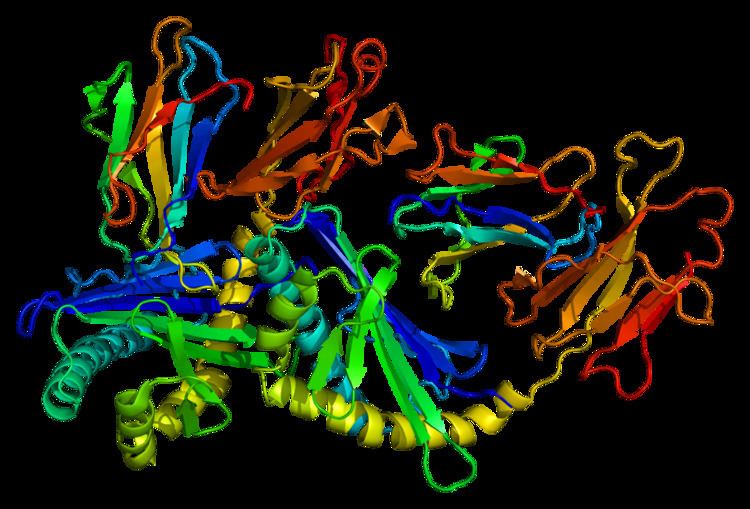Entrez 912 | Ensembl ENSG00000158473 | |
 | ||
Aliases CD1D, CD1A, R3, R3G1, CD1d molecule External IDs OMIM: 188410 MGI: 107674 HomoloGene: 1337 GeneCards: CD1D | ||
CD1D is the human gene that encodes the protein CD1d, a member of the CD1 (cluster of differentiation 1) family of glycoproteins expressed on the surface of various human antigen-presenting cells. They are non-classical MHC proteins, related to the class I MHC proteins, and are involved in the presentation of lipid antigens to T cells. CD1d is the only member of the group 2 CD1 molecules.
Contents
Biological significance
CD1d-presented lipid antigens activate a special class of T cells, known as natural killer T (NKT) cells, through the interaction with the T-cell receptor present on NKT membranes. When activated, NKT cells rapidly produce Th1 and Th2 cytokines, typically represented by interferon-gamma and interleukin 4 production.
Nomenclature
CD1d is also known as R3G1
Ligands
Some of the known ligands for CD1d are:
CD1d tetramers
CD1d tetramers are protein constructs composed of four CD1d molecules joined together and usually fluorescently labelled, used to identify NKT cells or other CD1d-reactive cells. In particular, type I NKT cells and some type II NKT cells are stained by them. A differentiation of these two types can be obtained in human by using an antibody against the TCR Vα24 chain, which is specific of type I NKT cells.
Although they are the most widely used of CD1d oligomers, sometimes CD1d dimers (two units) or pentamers (five units) are used instead.
